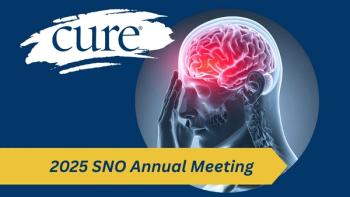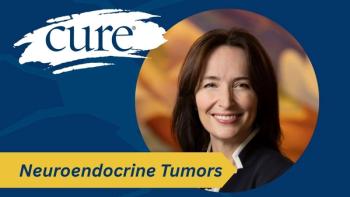
What Patients with Cancer Need to Know About Circulating Tumor DNA
What information could patients and providers learn from DNA found in a blood sample? An expert sat down with CURE to discuss ctDNA misconceptions.
For patients with cancer, circulating tumor DNA could one day offer great clinical utility, as one expert explained in an interview with CURE®.
All cells secrete free-floating DNA, known as cell-free DNA, into the body’s circulatory system — including cancer cells, as Dr. Ben Ho Park, director of the Vanderbilt-Ingram Cancer Center in Nashville, explained.
“Cancer is fundamentally a disease of DNA gone bad,” said Park. “There are mutations and other alterations, and that distinguish cancer cells from normal cells. So, circulating tumor DNA is the fraction of cell-free DNA that is secreted by cancer cells.”
Clinicians can check for circulating tumor DNA, also referred to as ctDNA, in patients via a simple blood draw, known as a liquid biopsy.
“Rather than going after a solid tumor and putting a needle in there, you can just get a tube of blood and get some of that genetic information — recognizing I'm saying some, because you can't necessarily get all — and the other advantage is you can do serial blood draws fairly easily compared to serial tissue biopsies,” Park explained.
These blood draws, Park noted, can even be performed outside of the clinical setting via mobile or home phlebotomy services, potentially bridging a disparity gap regarding access to testing.
However, the process is not without its disadvantages.
“Usually, we're talking 1% or less of the total cell-free DNA is circulating tumor DNA, and that's in patients with a fairly high volume of tumors, i.e., metastatic disease,” Park explained. “Usually, on the other hand, for a tissue biopsy, a proceduralist or a surgeon will shove a needle in there, and they get a pretty good enrichment of tumor compared to some of the surrounding normal cells.
“So, when we sequence cancer DNA, we're actually always looking for how many cancer molecules there are compared to normal [cells], so that we can be more confident because sometimes sequencing has errors. When you get to the level of ctDNA, and we're talking 1% or less, that becomes challenging sometimes, and that's why, in its current state, liquid biopsies are generally not as sensitive as tissue biopsies, just because there's not as much ctDNA compared to tissue DNA.”
READ MORE:
However, Park noted that liquid biopsies are more likely to find resistance mutations to certain endocrine therapies among patients with metastatic cancer compared to traditional biopsies.
“The blood acts as a reservoir for all metastatic sites, if you will,” Park said. “So as long as [the tumors are] shedding enough (DNA) and there's enough tumor volume, that's the one case where liquid biopsy may afford a higher chance of finding something.”
Potential for Clinical Utility
“There's great potential utility here,” Park said. “And that is, can we use liquid biopsies or ctDNA to figure out who's cured or who's not? And that's been a big buzz lately, because as the years have gone by, technology has improved. Our understanding of what we could do with this has improved.”
ctDNA testing, for example, could one day spare some patients from unnecessary overtreatment.
“We kind of over-treat because we know, let's say, in stage 3 breast cancer, 60% of patients are cured with just surgery, but 40% are going to come back with an incurable disease,” Park said. “So, we flood the body with all these different therapies … and our clinical trials have shown if you follow those patients out for years to decades, you cure more patients. But what about all those patients who are already cured, but are now getting needlessly exposed to these therapies? And what about all the patients at the end of all those therapies that are asking me, am I cured or am I not cured? We can't tell.”
While there are currently “a couple of great studies and tests that have shown, if it’s positive, [that] you probably have microscopic disease that’s going to come back,” clinicians currently lack negative predictive value from ctDNA.
“If someone's negative on these blood tests, we can't say they're cured,” Park said. “There's a significant, sizable fraction of patients in these studies that have a negative ctDNA test, and they still go on to develop metastatic disease. I'm hoping with the next iteration [of tests] — and there's some promising data out there that that will actually improve dramatically — so that someday we can tell patients, ‘You know what? You've got a 99% chance of being cured.’ Nothing in our business is ever 100%.
“What we don't have [now] … is utility, and in five or 10 years, I think we will. Because one, the negative predictive value isn't good enough right now, and the positive predictive value, if it's positive you're going to probably have disease come back [but] we don't know if acting on that yet is going to afford better outcomes.”
For more news on cancer updates, research and education, don’t forget to





